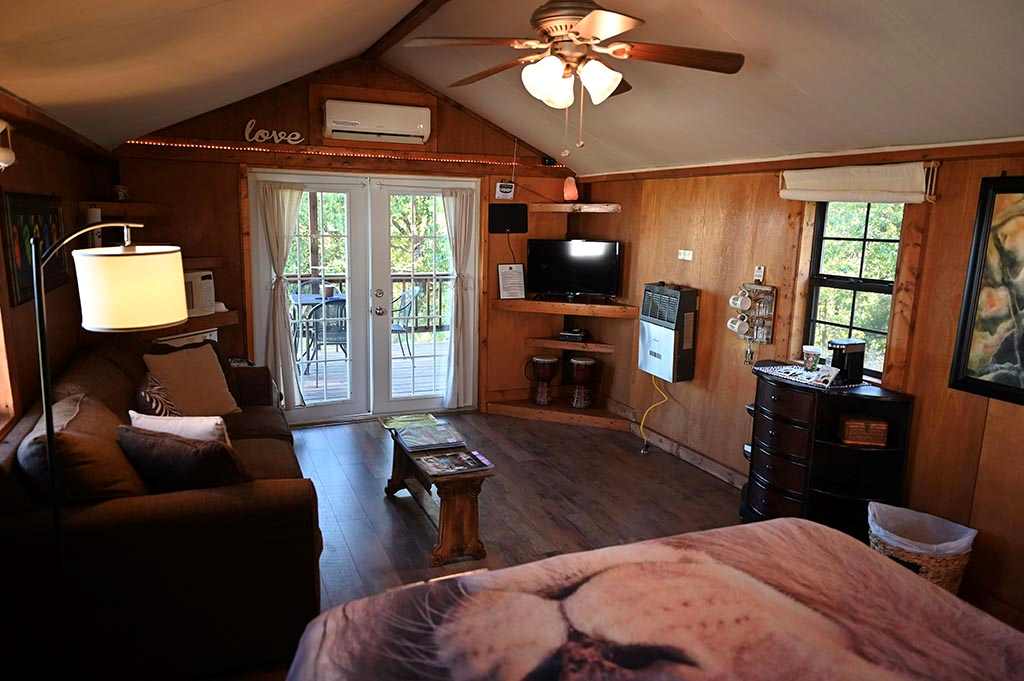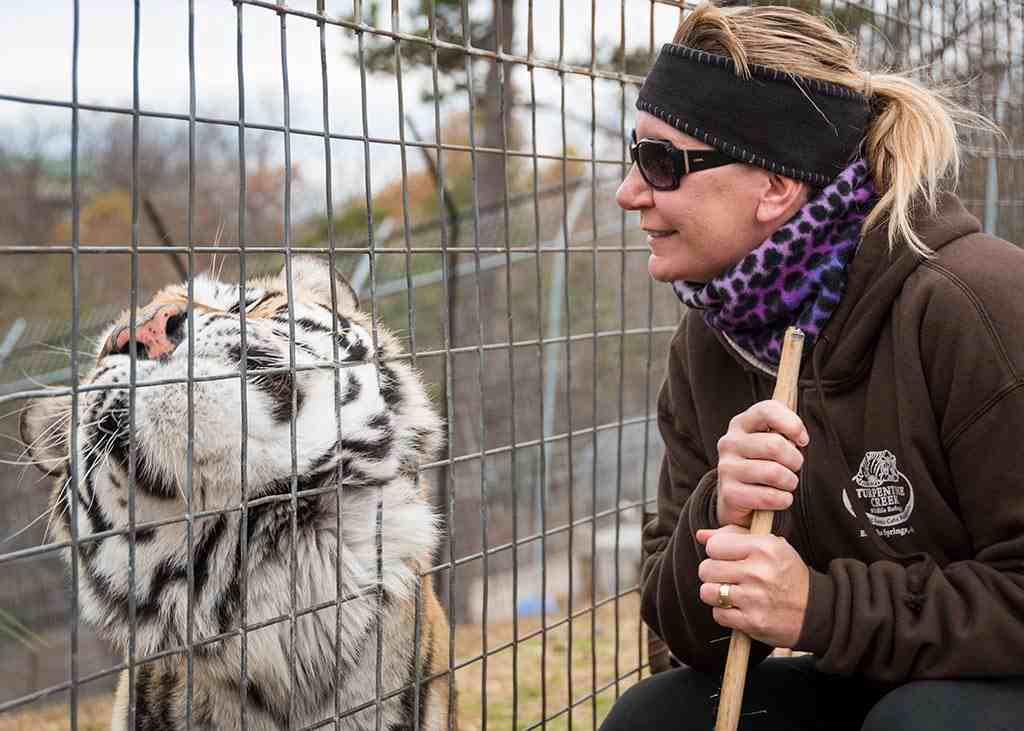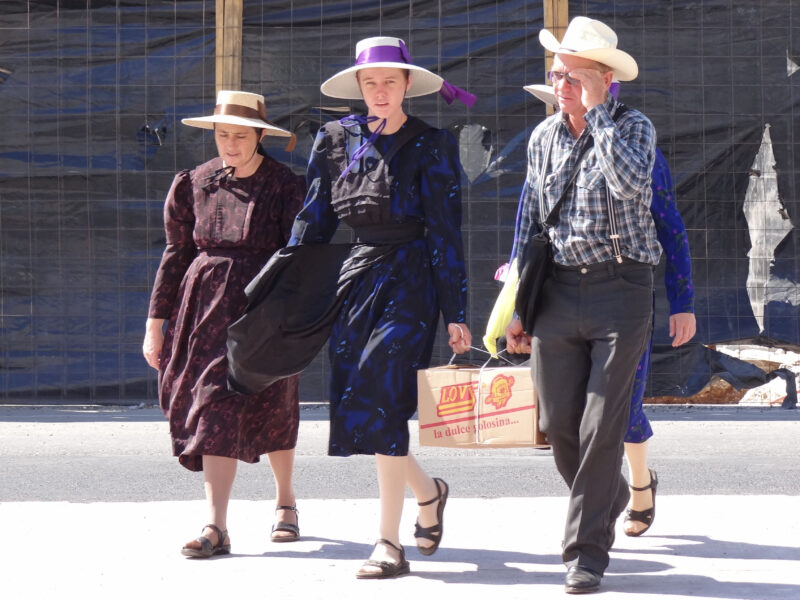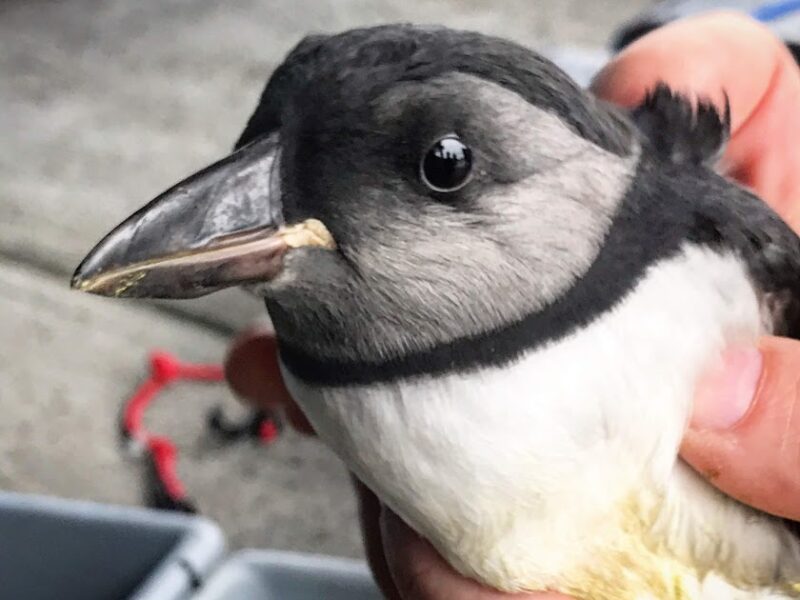If you were watching TV during pandemic lockdown, chances are you were enthralled by the outrageous adventures of the Tiger King, Joe Exotic. The titular protagonist of the Netflix documentary series is now serving time in jail, but what many people don’t realize is that accredited animal sanctuaries across the United States are still dealing with the fallout of his actions.
One of those sanctuaries is Turpentine Creek Wildlife Refuge (TCWR), a sprawling property that houses 88 rescued animals in Arkansas’ Ozark Mountains. It welcomes visitors as part of its mission to educate the public on the harmful practices of roadside zoos in America, many of which were supplied with tiger cubs bred by Exotic.
The non-profit TCWR has been campaigning for years to have the American government introduce a law to ban the private ownership of big cats to put an end to the kind of animal abuse that was on display by the Tiger King. That law, the Big Cat Public Safety Act (BCPSA), was finally passed into law late in 2022.
“The sad thing is it took a pandemic where most of us were stuck at home watching nonsense like the Tiger King to create an avenue to get a law passed to protect big cats because people were finally able to see what terrible situations some of these animals were in,” said Turpentine Creek Wildlife Refuge founder and president Tanya Smith.
For years, Smith and the operators of other officially accredited animal sanctuaries have lobbied successive administrations to get the bill passed. One of her biggest allies was Carole Baskin, the owner and operator of Florida-based Big Cat Rescue, who played a prominent role in the Netflix documentary to have Joe Exotic’s operation shut down.
With the passage of the new law, Baskin believes that the need for sanctuaries like hers will decline which is one of the reasons she recently decided to merge her cat population with that of Turpentine Creek.
To house the 32 animals coming from Big Cat Rescue, the non-profit TCWR spent $2.5 million to build 44 new enclosures, but like Baskin, Smith hopes that sanctuaries like hers will one day be out of business and more money can be spent to help preserve cat populations in the wild.
Accurate population counts for big cats are hard to come by, but it’s believed that there are more tigers held by private owners in the United States than there are in their native habitats. By WWF estimates, there are 4,500 wild tigers while the United States Fish and Wildlife Service believes there are 20,000 captive tigers privately owned in the U.S. Under the new BCPSA, private owners now have to register their animals.
“We’ve heard there could be a thousand tigers just in Texas, but nobody really knows what the real number is across America,” said Smith, noting that there remains a thriving underground industry in the country to breed tiger cubs for petting zoos and roadside attractions. These young animals are typically taken from their mothers when they are only one month old and after a few months of usefulness, end up as exotic pets or in private zoos where they live under appalling conditions.
Smith hopes that the BCSA will finally put an end not only to the cub petting industry, but also phase out private ownership of big cats for individuals who don’t have the license to exhibit them.
Until that day comes, Turpentine Creek is the forever home to nearly 90 animals including not only big cats like lions, tigers and cougars, but smaller cats like bobcats and servals, not to mention a few bears and even a hyena.
“Our mission is to save abused big cats, but we’re suckers for animals that are suffering so we have all kinds at the refuge,” admitted Smith who noted that they had rescued more than 500 animals over their 31 years of operation.
Smith says that they welcome the public to visit their sanctuary because one of their primary goals is to educate people about the circumstances of how the cats came to be there.
“When you come to our Discovery Area, there’s always someone there to tell you everything there is to know about the animals, including what kind of hell they rose out of to be here.”
Smith noted that many animal sanctuaries claim to exhibit rescued wild animals, but are really nothing more than for-profit operations that buy animals from other roadside zoos or breed animals themselves to sell to private individuals.
She urged people to do some research and only visit sanctuaries like hers that are members of the Big Cat Sanctuary Alliance and accredited by the Global Federation of Animal Sanctuaries to help put an end to the practice of exhibiting big cats for profit.
As many as 50,000 people per year come to the TCWR, many of whom join the hourly tram tour that follows a half-mile loop that drives by the spacious animal enclosures, but for those looking for a special experience, Turpentine Creek has several on-site accommodations that allow visitors more time to better observe the animals.
“We understood pretty early on that we needed to diversify our funding to meet our annual budget which these days is near $4.5 million so when donors started asking for places to stay near the animals, we realized that lodging would be a great opportunity,” said Smith who explained that they now offer several different options for overnight stays, including treehouses, glamping tents, RV spaces and even safari lodges that bring a taste of Africa to the Ozarks.

While the money they raise from the lodgings, gift shops and other visitor activities helps fund their administrative costs, Smith said that 100 per cent of the donations given to TCWR goes directly to care for the animals.
“The longer you stay, the more you get out of the experience,” said Smith. “Visiting for hours is great, but if you’re there for a day or more, you can see the animals at all times of the day and you’ll hear the different noises they make at night like the lions’ roaring or the tigers’ carolling.”
Many people combine their visit to Turpentine Creek with a stay in nearby Eureka Springs, a pretty Ozarks mountain town with winding streets and exquisite heritage homes that has been a popular tourist destination for generations.
To find out more about Turpentine Creek Wildlife Refuge, visit https://www.turpentinecreek.org, For tips on where to visit other accredited sanctuaries, visit the Big Cat Sanctuary Alliance, go to https://www.bigcatalliance.org.
- The author was a guest of Arkansas Tourism which did not read or approve this article before publication.


